Technical Guide - Vogelundnoot.com
Technical Guide - Vogelundnoot.com
Technical Guide - Vogelundnoot.com
Create successful ePaper yourself
Turn your PDF publications into a flip-book with our unique Google optimized e-Paper software.
06 VIENNALINE Compact<br />
General Specifications & <strong>Technical</strong> Information<br />
General Specifications (continued...)<br />
PANEL RADIATORS<br />
Distinguished by the ECO seal of quality<br />
The panel radiators from VOGEL&NOOT<br />
bear the ECO seal of quality, which stands<br />
for all-round <strong>com</strong>patibility with all (renewable)<br />
energy sources. It guarantees that the radiators<br />
can be operated in an economical and<br />
ecologically-sound manner, with significant savings on<br />
heating costs (an average of 15% * ) and an enormous<br />
reduction in CO 2 emissions.<br />
*On average, in <strong>com</strong>parison with old sectional radiators, test results based<br />
on data from Pinkafeld University of Applied Sciences.<br />
Heat Output<br />
The VIENNALINE Compact range has an advanced design<br />
giving high efficiency characteristics. The high outputs per unit<br />
surface area for the convector models have been achieved by<br />
ensuring excellent contact between the convector plates and<br />
both the water channels and dividing metal of the radiator<br />
panels. The convector surface is spot-welded to the metal<br />
channels and fits neatly into grooves on the water channels, thus<br />
ensuring high heat transfer rates.<br />
The radiator outputs quoted in this brochure are based on a<br />
mean water temperature in the radiator of 70°C (158°F) and a<br />
room temperature of 20° (68°F) - Delta T50.<br />
For other operating conditions - i.e. differences between mean<br />
water temperature and room temperature other than 50°C - the<br />
correction factors below should be applied (see example right).<br />
An example of radiator selection at a non-standard temperature<br />
difference is given below:<br />
Example:<br />
Heat emission required:<br />
Room air temperature required:<br />
Mean water temperature in radiator:<br />
1. Temperature difference = 65-20 = 45 o C<br />
2. From Factor Table 45 o C gives a factor of: 0.87<br />
3. Divide required heat emission<br />
by factor = 2000<br />
0.87<br />
4. From selection tables choose any<br />
radiator rated at 2298 Watts or more.<br />
2000 Watts<br />
20 o C<br />
65 o C<br />
= 2298 Watts<br />
In accordance with BSEN 442: 1997, the heat output figures in<br />
this leaflet have been derived from tests made with top and<br />
bottom same side connection (T.B.S.E.). When bottom opposite<br />
end connections are used (B.O.E.), there will be a small reduction<br />
in heat output.<br />
Centigrade Factor Fahrenheit<br />
15°C 0.21 27°F<br />
20°C 0.30 36°F<br />
25°C 0.41 45°F<br />
30°C 0.51 54°F<br />
35°C 0.63 63°F<br />
40°C 0.75 72°F<br />
45°C 0.87 81°F<br />
50°C 1.00 90°F<br />
55°C 1.13 99°F<br />
60°C 1.27 108°F<br />
65°C 1.41 117°F<br />
70°C 1.55 126°F<br />
Weight and Water Content per Metre Length (approx.)<br />
Height (mm)<br />
300<br />
400 500 600 750<br />
Type<br />
K1SPG<br />
P+<br />
K2<br />
K3<br />
Water<br />
Content (l)<br />
Weight<br />
(kg)<br />
Water<br />
Content (l)<br />
Weight<br />
(kg)<br />
Water<br />
Content (l)<br />
Weight<br />
(kg)<br />
Water<br />
Content (l)<br />
Weight<br />
(kg)<br />
Water<br />
Content (l)<br />
Weight<br />
(kg)<br />
2.00 10.52 2.60 13.93 3.30 15.81 3.70 17.57 4.40 22.56<br />
3.90 15.81 5.00 20.92 6.10 24.63 7.10 28.14 8.60 35.63<br />
3.90 18.83 5.00 25.39 6.10 29.14 7.10 32.68 8.60 42.47<br />
6.00 28.10 7.60 38.14 9.40 43.75 10.80 49.07 N/A N/A






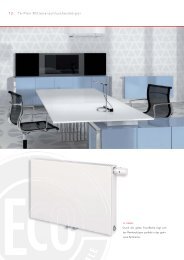
![Catalogus [pdf; 6.35 MB] - Vogelundnoot.com](https://img.yumpu.com/48248733/1/184x260/catalogus-pdf-635-mb-vogelundnootcom.jpg?quality=85)
![Technische Informationen KONTEC Modernisierung [pdf; 0.21 MB]](https://img.yumpu.com/48194356/1/184x260/technische-informationen-kontec-modernisierung-pdf-021-mb.jpg?quality=85)
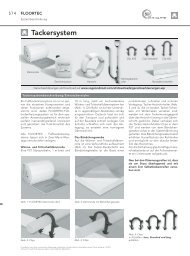
![Accessories [pdf; 0.22 MB] - Vogelundnoot.com](https://img.yumpu.com/47711728/1/184x260/accessories-pdf-022-mb-vogelundnootcom.jpg?quality=85)

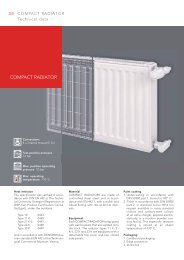
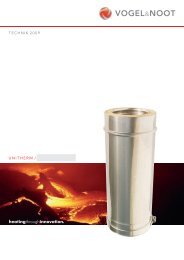

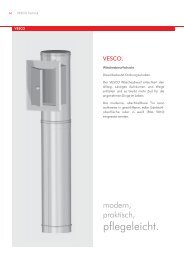
![Montageanleitung SECO [pdf; 0.90 MB] - Vogelundnoot.com](https://img.yumpu.com/45428518/1/184x260/montageanleitung-seco-pdf-090-mb-vogelundnootcom.jpg?quality=85)
